Info
Subfamily: Panicoideae
Genus etymology: Digitaria = "having fingers" [Latin] refering to the inflorescence structure
Species etymology: ciliaris = "ciliate" [Latin] refering to the hairs on the lower lemma
Photosynthetic type: C4 (warm season)
Nativity: naturalized - accidental
First recorded in Hawaiʻi: 1864
Map
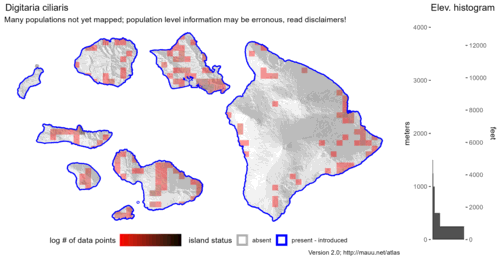

Inflorescence
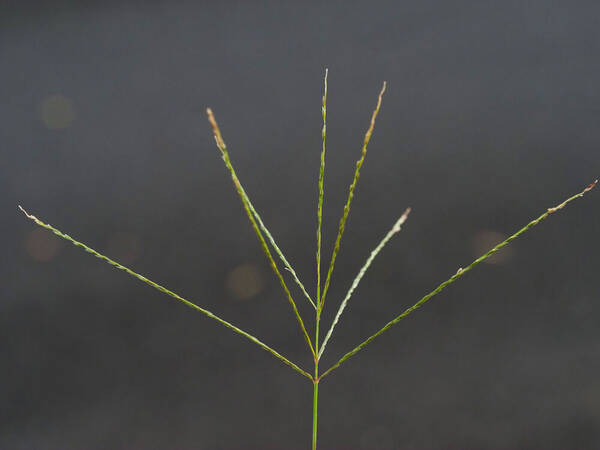
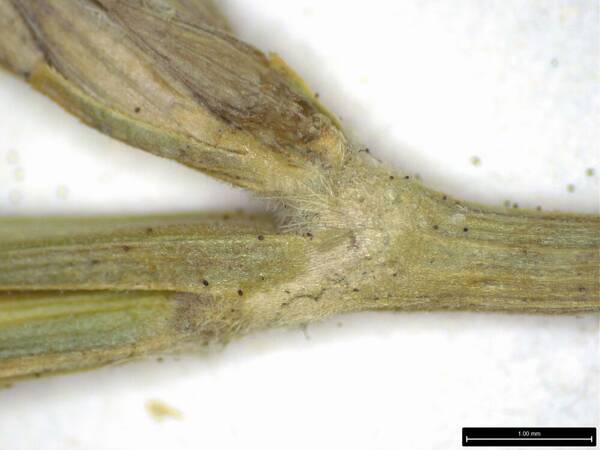
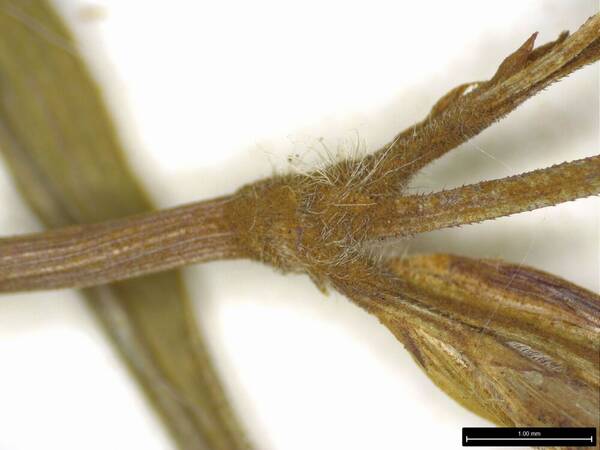
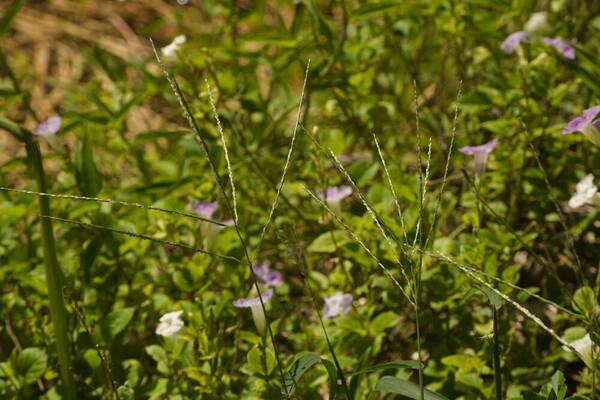
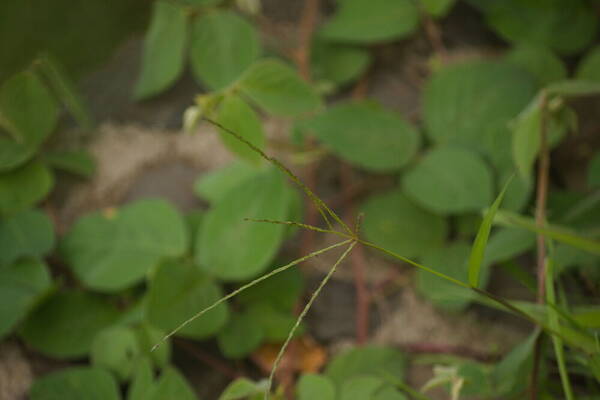
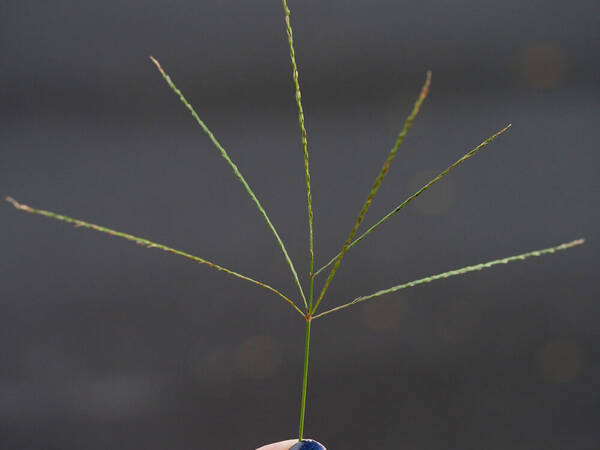
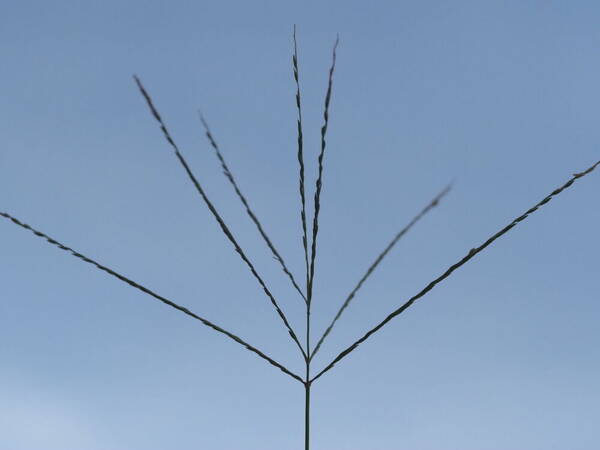
Plant
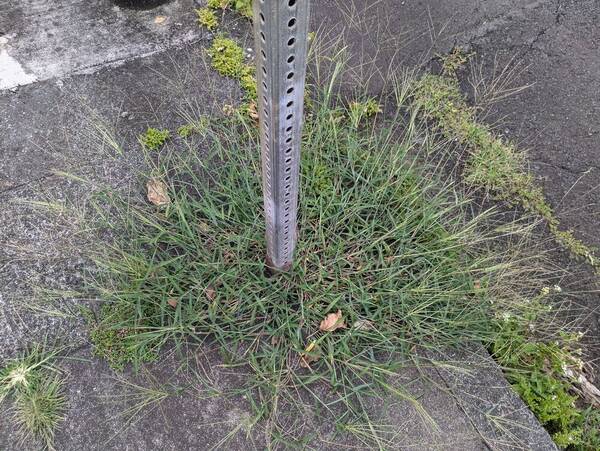
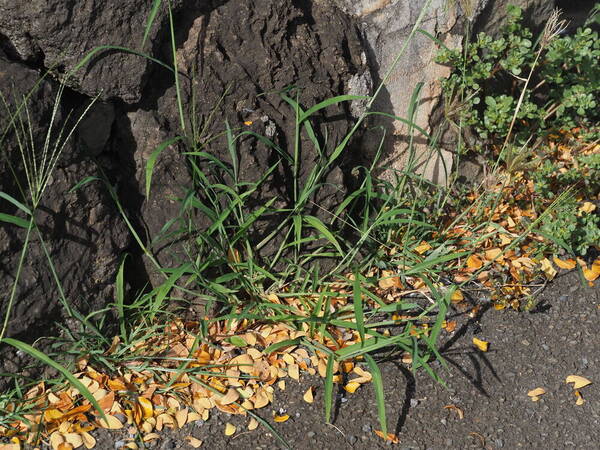
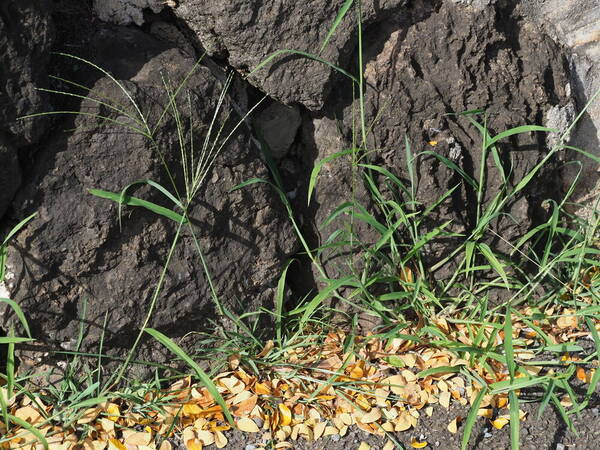
Habit
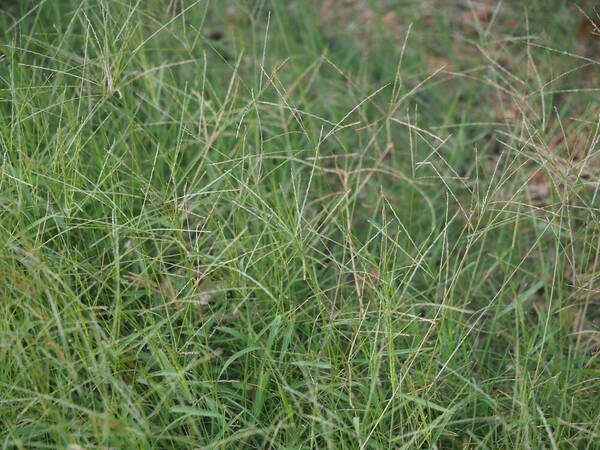
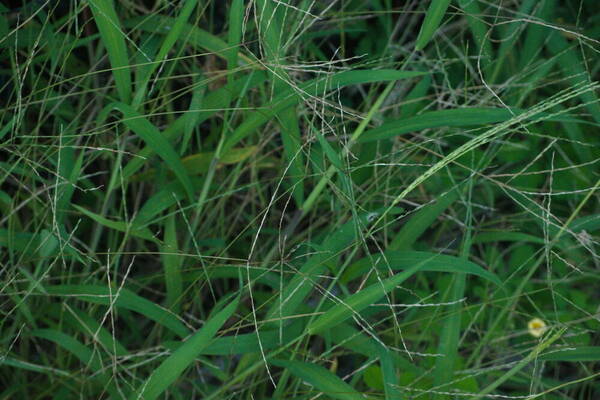
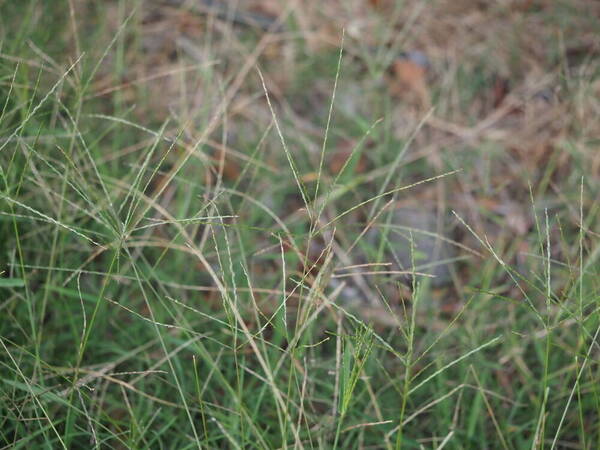
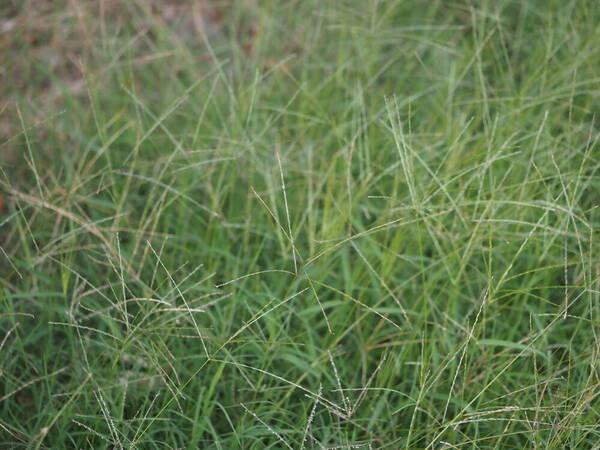
Spikelets
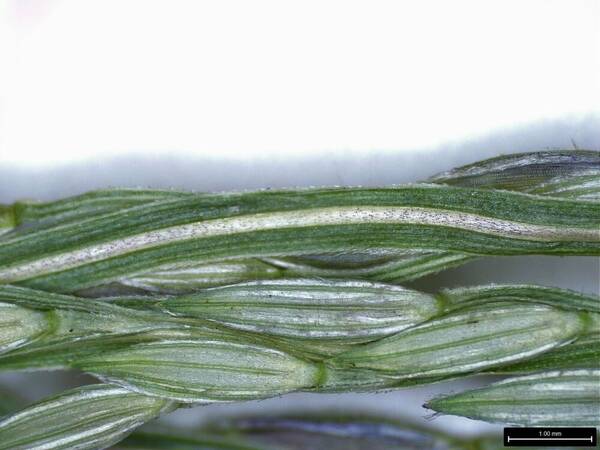
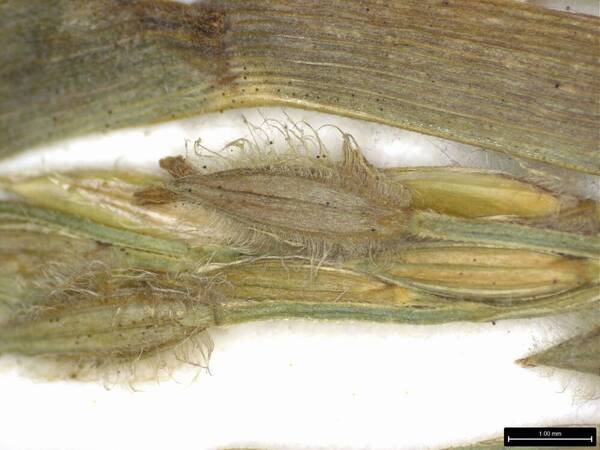
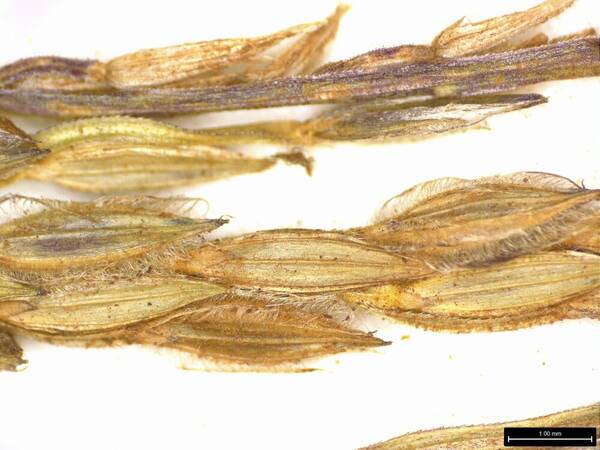
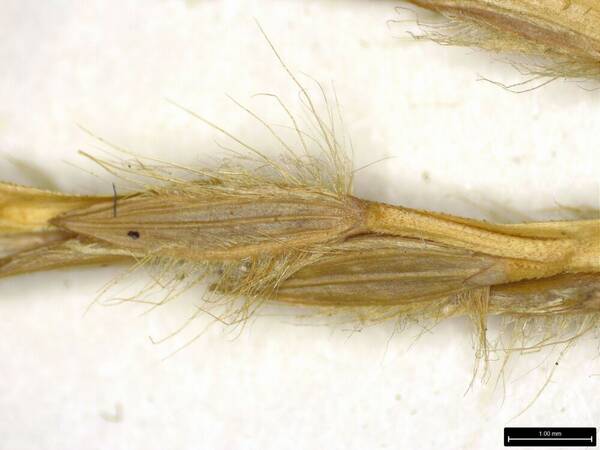
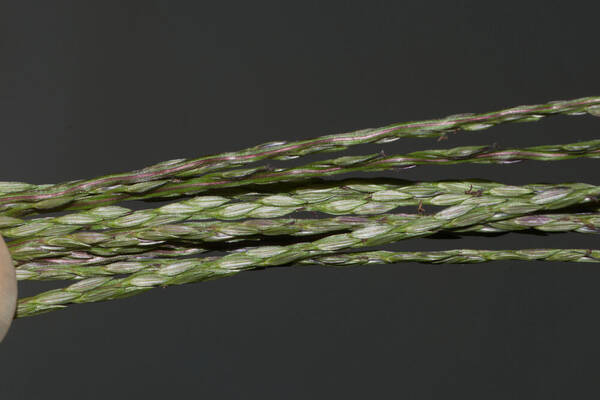
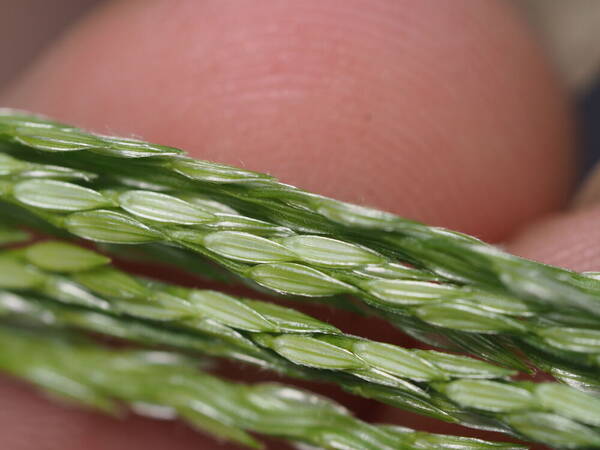
Description
Annual; culms 20–100 cm. high, decument at the base and geniculately ascending. Leaf-blades broadly linear, 3–25 cm. long, 3–10 mm. wide. Inflorescence digitate or subdigitate (axis up to 5 cm. long in robust specimens), composed of 2–12 racemes; racemes stiff, 6–22 cm. long, sometimes adorned with sparse long white hairs, the spikelets binate and overlapping by about 2/3 of their length on a winged rhachis with triquetrous midrib. Spikelets narrowly elliptic, (2–)2.5–3.3(–3.7) mm. long, sharply acute; lower glume distinct, typically 0.2–0.4 mm. long and triangular; upper glume (1/2–)2/3–3/4 as long as the spikelet, 3-nerved; lower lemma as long as the spikelet, 7-nerved, the nerves smooth and evenly spaced or with a wide interspace flanking the midrib (sometimes those of the subsessile spikelet evenly and of the pedicelled spikelet unevenly spaced), appressed puberulous, silky pubescent or rarely shortly villous, often encompassed by a ciliate frill, sometimes the pedicelled or both spikelets beset with stiff glassy yellowish bristles; fruit ellipsoid, grey to light brown.
(Description source: Clayton, W.D. & Renvoize, S.A. 1982. Flora of Tropical East Africa. Gramineae (Part 3). A.A. Balkema, Rotterdam. 448 pp. )
Annual up to 100 cm high, often decumbent at the base and geniculately ascending; leaves broadly linear. Inflorescence of 2–12 digitate or subdigitate racemes, the axis up to 5 cm long in robust specimens; racemes stiff, 6–22 cm long, the spikelets in pairs and overlapping by 2/3 their length on a winged rhachis with triquetrous midrib. Spikelets narrowly elliptic, 2.5–3.3(–3.7) mm long, sharply acute; lower glume a distinct triangular scale usually 0.2–0.4 mm long; upper glume (1/2–)2/3–3/4 the length of the spikelet, 3-nerved; lower lemma 7-nerved, the nerves smooth and evenly spaced or with a wide interspace flanking the midrib (sometimes the spikelets of a pair different), appressed-puberulous to silky-pubescent or rarely shortly villous, often with aciliate frill, sometimes one or both spikelets of a pair beset with glassy bristles; fruit ellipsoid, grey to light brown.
(Description source: Cope, T.A, (1995) Flora Somalia, Vol 4. Royal Botanical Gardens, Kew, London. 312 pp. )
A loosely caespitose or solitary growing annual. Culms 20–60 cm., decumbent to ascending, glabrous, nodes dark and (sub)glabrous. Leaf sheaths scaberulous, sometimes with a few bulbous based bristles. Ligule up to 2.5 mm. long, truncate, erose. Leaf laminae 4–13 × 0.3–0.8 mm., linear, flat, scaberulous on both sides, with a few bulbous based bristles near the base, scabrous along the margin. Inflorescence composed of 2–9 racemes, 6–12 cm. long, in 1 or 2-more superposed whorls, sometimes a few solitary along the short common axis. Rhachis triquetrous, winged, up to 1.0 mm. broad, smooth with scabrous margins. Pedicels 2-nate, 0.5–2.5 mm. long, triangular, scabrous, scarcely broadened at the apex. Spikelets 2.7–3.4 mm. long, oblonglanceolate. Inferior glume c. 0.5 mm. long, ovate to oblong triangular, often somewhat truncate. Superior glume 2/3–3/4 of the spikelet, oblong triangular, 3-nerved, appressed hairy, hairs very fine, smooth, acute. Inferior lemma as long as the spikelet, oblong-lanceolate, 7-nerved, nerves smooth or nearly smooth, central zone often very broad, appressed hairy, sometimes also with bristle-hairs, rarely glabrous. Superior glume as long as to somewhat shorter than the spikelet, oblong-lanceolate, acute, pale yellow to pale brown, often purplish tinged.
(Description source: Launert, E. & Pope, G.V. (eds.). 1989. Flora Zambesiaca. Volume 10. Part 3. Kew, London. 152 pp. )
Plants annual or of indefinite duration. Culms 10-100 cm long, erect portion 30-60 cm, long-decumbent, rooting and branching at the decumbent nodes, sparingly branched or unbranched from the upper nodes; nodes 2-5, glabrous. Sheaths with papillose-based hairs; ligules 2-3.5 mm, erose; blades 1.5-14.4(18.9) cm long, 3-9 mm wide, flat, glabrous, a few scattered papillose-based hairs at the base of the adaxial surfaces (occasionally over the whole adaxial surface), usually also scabrous on both surfaces. Panicles with 2-10 spikelike primary branches, these digitate or in 1-3 whorls on rachises to 2 cm; lowest panicle nodes with hairs more than 0.4 mm; primary branches 3-24 cm long, 0.6-1.2(2) mm wide, glabrous or with less than 1 mm hairs, axes wing-margined, wings at least 1/2 as wide as the midribs, lower and middle portions of the branches bearing spikelets in unequally pedicellate pairs; secondary branches absent; shorter pedicels 0.5-1 mm; longer pedicels 1.5-4 mm. Spikelets (2.7)2.8-4.1 mm long, homomorphic. Lower glumes 0.2-0.8 mm, acute; upper glumes (1.2)1.5-2.7 mm, about 2/3 to almost as long as the spikelet, 3-veined, margins and apices pilose; lower lemmas 2.7-4.1 mm, 7-veined, veins unequally spaced, outer 3 veins crowded together near each margin, well-separated from the midvein, usually smooth, occasionally the lateral veins scabridulous on the distal 1/3 margins and regions between the 2 inner lateral veins hairy, hairs 0.5-1 mm (rarely glabrous), sometimes also with glassy yellow hairs between the 2 inner lateral veins, these more common on the upper spikelets; upper lemmas 2.5-4 mm, glabrous, yellow, tan, or gray when immature, becoming brown, often purple-tinged (occasionally completely purple) at maturity; anthers 0.6-1 mm. 2n = 54.
(Description source: Barkworth, M.E., Capels, K.M., Long, S. & Piep, M.B. (eds.) 2003. Flora of North America, north of Mexico. Volume 25. Magnoliophyta: Commelinidae (in part): Poaceae, Part 2. Oxford University Press, New York. 783 pp http://floranorthamerica.org/Digitaria_ciliaris )
Annuals; culms decumbent at base and geniculately ascending, 20-100 cm long. Sheaths variously covered with bulbous-based hairs, becoming glabrous apically; ligule 1-3 mm long, truncate to rounded, erose; blades linear, 3-25 cm long, 3-10 mm wide. Inflorescence composed of 2-12 racemes, digitately or subdigitately arranged, the axis up to 5 cm long, racemes stiff, 6-22 cm long, sometimes sparsely covered with long white hairs, axis trigonous, winged; spikelets in pairs, imbricate, narrowly elliptic, (2-)2.5-3.3(-3.7) mm long, sometimes the pedicellate or both spikelets with stiff yellowish bristles, apex sharply acute; first glume triangular, usually 0.2-0.4 mm long, second glume (1/2)2/3-3/4 as long as the spikelet, 3-nerved; first lemma as long as the spikelet, 7-nerved, the nerves smooth and evenly spaced or with a wide interval flanking the midnerve, appressed puberulent, silky pubescent or rarely short-villous, usually ciliate, second lemma narrowly ovate, ca. 2.8 mm long, hyaline, 3-nerved, glabrous; palea similar in shape and texture to lemma, ca. 2.8 mm long, 2-nerved, clasped by the lemma. Caryopsis gray to pale brown, ellipsoid. [2n = 18, 36, 54, 60, 68, 70, 72.]
(Description source: O’Connor, P.J. 1990. Poaceae, pp. 1481–1604. In: Wagner W.L., Herbst D.R. & Sohmer S.H. (eds.)., Manual of the flowering plant of Hawaiʻi. Vol. 2. University of Hawaii Press & Bishop Museum Press, Honolulu )